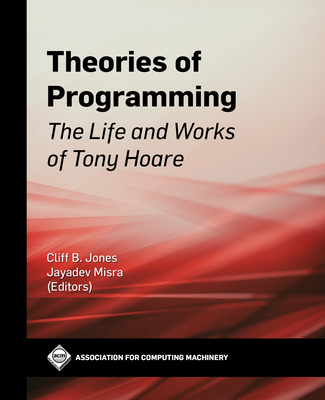An Introduction to Verification of Visualization Techniques
暫譯: 視覺化技術驗證入門
Tiago Etiene, Robert M. Kirby, Cláudio T. Silva
- 出版商: Morgan & Claypool
- 出版日期: 2015-12-01
- 售價: $1,430
- 貴賓價: 9.5 折 $1,359
- 語言: 英文
- 頁數: 94
- 裝訂: Paperback
- ISBN: 1627058338
- ISBN-13: 9781627058339
海外代購書籍(需單獨結帳)
商品描述
As we increase our reliance on computer-generated information, often using it as part of our decision-making process, we must devise tools to assess the correctness of that information. Consider, for example, software embedded on vehicles, used for simulating aircraft performance, or used in medical imaging. In those cases, software correctness is of paramount importance as there's little room for error. Software verification is one of the tools available to attain such goals. Verification is a well known and widely studied subfield of computer science and computational science and the goal is to help us increase confidence in the software implementation by verifying that the software does what it is supposed to do. The goal of this book is to introduce the reader to software verification in the context of visualization. In the same way we became more dependent on commercial software, we have also increased our reliance on visualization software. The reason is simple: visualization is the lens through which users can understand complex data, and as such it must be verified. The explosion in our ability to amass data requires tools not only to store and analyze data, but also to visualize it. This book is comprised of six chapters. After an introduction to the goals of the book, we present a brief description of both worlds of visualization (Chapter 2) and verification (Chapter 3). We then proceed to illustrate the main steps of the verification pipeline for visualization algorithms. We focus on two classic volume visualization techniques, namely, Isosurface Extraction (Chapter 4) and Direct Volume Rendering (Chapter 5). We explain how to verify implementations of those techniques and report the latest results in the field of verification of visualization techniques. The last chapter concludes the book and highlights new research topics for the future.
商品描述(中文翻譯)
隨著我們對電腦生成資訊的依賴日益增加,並經常將其作為決策過程的一部分,我們必須設計工具來評估這些資訊的正確性。例如,考慮嵌入在車輛上的軟體、用於模擬飛機性能的軟體或用於醫學影像的軟體。在這些情況下,軟體的正確性至關重要,因為錯誤的空間非常有限。軟體驗證是達成這些目標的工具之一。驗證是計算機科學和計算科學中一個眾所周知且廣泛研究的子領域,其目標是通過驗證軟體是否按照預期運作來提高我們對軟體實現的信心。本書的目的是在可視化的背景下向讀者介紹軟體驗證。隨著我們對商業軟體的依賴增加,我們對可視化軟體的依賴也隨之增加。原因很簡單:可視化是用戶理解複雜數據的透鏡,因此必須進行驗證。我們在數據收集能力上的爆炸性增長需要工具來不僅存儲和分析數據,還要可視化數據。本書由六個章節組成。在介紹本書目標後,我們簡要描述可視化(第二章)和驗證(第三章)這兩個領域。接著,我們將說明可視化演算法的驗證流程的主要步驟。我們專注於兩種經典的體積可視化技術,即等值面提取(第四章)和直接體積渲染(第五章)。我們解釋如何驗證這些技術的實現,並報告可視化技術驗證領域的最新成果。最後一章總結了本書並強調未來的新研究主題。
















